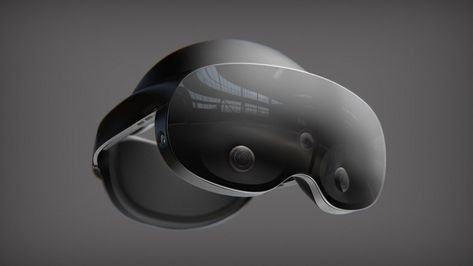Meta’s revelation of “Project Cambria,” a cutting-edge virtual reality headset tailored for professional applications, signifies a significant leap in immersive technology. With features such as high-resolution displays, eye tracking, and enhanced hand tracking, this next-generation headset aims to redefine enterprise training, collaboration, and design work within the virtual realm.
“Project Cambria” is positioned as a transformative tool for professionals, offering an unparalleled level of realism and interaction in the virtual space. The high-resolution displays contribute to a more lifelike and detailed visual experience, enhancing the headset’s potential for applications such as architectural design, product prototyping, and immersive training simulations.
The inclusion of eye tracking technology introduces a new dimension to user interaction by allowing the headset to understand and respond to the user’s gaze. This feature enhances both the realism and efficiency of virtual experiences, providing a more intuitive and natural way for professionals to navigate and interact within virtual environments.
Moreover, the improved hand tracking capabilities of “Project Cambria” contribute to a more immersive and responsive user experience. The ability to accurately track hand movements enhances the sense of presence and control, making it well-suited for applications where precise interactions, such as 3D modeling or virtual assembly, are essential.
The unveiling of “Project Cambria” aligns with Meta’s broader strategy of advancing the adoption of virtual reality beyond consumer applications. By targeting professional use cases, Meta aims to position virtual reality as a powerful tool for productivity and collaboration in various industries.
The enterprise-focused approach of “Project Cambria” addresses the evolving needs of businesses seeking innovative solutions for remote collaboration, skill development, and immersive design processes. As the global workforce continues to embrace flexible and remote work models, the integration of advanced virtual reality technologies becomes increasingly relevant for enhancing communication and collaboration among distributed teams.
With its advanced features and focus on enterprise applications, this next-generation headset has the potential to revolutionize how professionals work, collaborate, and train within virtual environments, opening up new possibilities for innovation and productivity across various industries.





